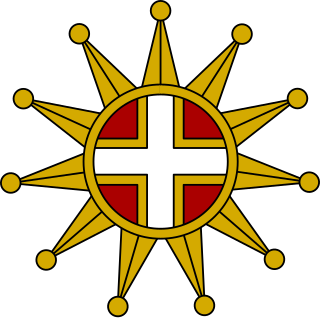Related Research Articles
The German 206th Infantry Division, was a military unit that served during World War II. Like most German infantry units it had no motorization, and relied on leg and horse mobility.

The 334th Infantry Division was a German Army infantry division in World War II. Originally formed in November 1942, it surrendered to the Allies at the conclusion of the Tunisian Campaign in May 1943. The division was reconstituted on 3 June 1943 in France within the 1st Army, with the staff of the 80th Infantry Division as well as remnants of the old division and replacement units. It spent the remainder of the war serving on the Italian Front.

The 11th Infantry Division "Brennero" was a infantry division of the Royal Italian Army during World War II. The Brennero was classified as a mountain infantry division, which meant that the division's artillery was moved by pack mules instead of the horse-drawn carriages of line infantry divisions. Italy's real mountain warfare divisions were the six alpine divisions manned by Alpini mountain troops. The Brennero was named for the Brenner Pass between Italy and Austria. The division was based in the western half of South Tyrol with the division's headquarter in Bolzano.

The 22nd Infantry Division "Cacciatori delle Alpi" was an infantry division of the Royal Italian Army during World War II. The division was based in Perugia and named for the Cacciatori delle Alpi corps raised for the Second War of Italian Independence.

The 58th Infantry Division "Legnano" was an infantry division of the Royal Italian Army during World War II. The Legnano's predecessor division was formed on 8 February 1934 in Milan and named for the medieval Battle of Legnano. On 24 May 1939 the division split to form the 6th Infantry Division "Cuneo" and the 58th Infantry Division "Legnano". After the announcement of the Armistice of Cassibile the Legnano resisted the invading German forces. The division's staff and 67th Infantry Regiment "Legnano" were used to form the first unit of the Italian Co-belligerent Army, which fought on the allied side in the Italian campaign. On 17 February 1944 the division's last units joined other commands and the division was officially dissolved.

XI Corps was a corps-sized formation of the British Expeditionary Force, active during the First World War that served on the Western Front and in Italy. It was recreated as part of Home Forces defending the United Kingdom during the Second World War.
The XI Army Corps was a corps of the Royal Italian Army during World War II that participated in the invasion of Yugoslavia.
The 7th Rifle Corps was a corps in Red Army and Soviet Armed Forces, before and during The Great Patriotic War/World War II.
The 5th Army was a World War I and World War II field army of the Royal Italian Army.
The XXVI Army Corps was an infantry corps of the Royal Italian Army during World War I, the Italian invasion of Albania, and the Greco-Italian War and the subsequent Italian occupation of Greece during World War II.
The Italian XXI Army Corps was a formation of the Italian army in World War II.
The 403rd Security Division was a rear-security division in the Wehrmacht of Nazi Germany. Throughout the war, the unit was mainly deployed in the Army Group South Rear Area behind the Eastern Front, which was a large, German-occupied area of the Soviet Union. During the whole war, the 403rd Security Division was used throughout the war mainly on the Eastern Front for security tasks in the rear army area, such as capturing scattered Soviet soldiers and commissars. Further anti-Semitic measures, such as confiscations, removal of functions, the formation of "purely" Jewish houses, followed.
The 168th Infantry Division was an infantry division of the German Heer during World War II. It was active between 1939 and 1945.
The Italian XXII Army Corps was a formation of the Italian army in World War II.
The XXX Army Corps was a corps of the Royal Italian Army between 1915 and 1943. It was also known as Special Army Corps between November 1940 and June 1941.
The IX Army Corps was a corps of the Royal Italian Army between 1877 and 1944.
The I Army Corps was a corps of the Royal Italian Army between 1877 and 1943.
The XV Army Corps was a corps of the Royal Italian Army between 1939 and 1943.
The Italian XXIII Army Corps was a formation of the Italian army in World War II.
The XIX Army Corps was a corps of the Royal Italian Army between 1942 and 1943.